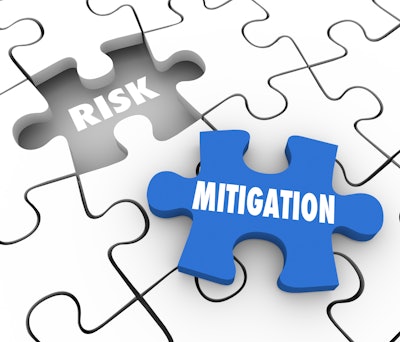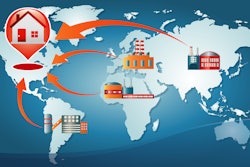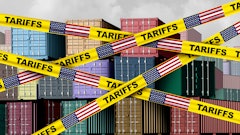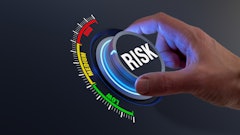
According to Greek legend, the Hydra was a gigantic snake-like monster with nine heads, one of which was immortal. Any hero who attempted to cut off a head from the beast would find that two more immediately emerged from the fresh wound to take its place.
This ancient monster was ultimately killed by Hercules — with a little help from his nephew Iolaus, who used a torch to cauterize the wounds and prevent them from regenerating.
Mastering supply chain risk management (SCRM) can feel like battling a many-headed hydra. Supply chain risks have serious short-term and long-term impacts on organizational liquidity, and the fight to put them down for good is almost never over. What’s more, any violations of environmental, social, and governance (ESG) principles can cripple consumer-side and supplier-side relations, trigger costly regulatory violations, or even create sanction-sensitive weak spots in your overall supply network.
And governments are taking notice. In 2015, the United Kingdom's Modern Slavery Act was passed by both houses of Parliament, soon followed by a near unanimous global movement to push for supply chain transparency and business accountability. In 2021, the International Sustainability Standards Board (ISSB) established a new baseline for ethical sourcing around the world, and Australia’s 2024 Climate Risk Disclosure Act joined a similar worldwide movement for detailed reporting on environmental risks.
Simply put, the bar for SCRM gets raised every year by investors, consumers, and government officials alike. So what’s the answer? Artificial intelligence (AI) tools streamline and centralize the process of identifying, assessing, monitoring, and mitigating risks — risks like modern slavery, cyber threats, and essential ESG concerns. In doing so, these AI-enhanced platforms give you the winning combination of Herculean strength and Iolaus-like follow-through.
What does that mean? That your organization is finally capable of defeating the Hydra. That mastering supply chain risk management is within reach for your organization.
The ugly matter of modern slavery
According to the Global Slavery Index, nearly 50 million people around the world are living in some form of modern slavery, and at least 30 million of those are undergoing forced labor. At the same time, almost one-third of all countries have laws or policies that make it difficult to leave an employer without penalty. Such horrific realities are an affront to humanity itself.
To make matters even worse, this forced “free” labor actually has a counterproductive effect on the economy, removing would-be consumers from the system and strangling their output under unhealthy and unsafe conditions.
Not surprisingly, almost every organization is in a race to remove modern slavery from their supply networks as quickly and completely as possible. In fact, a survey from Gartner revealed that over 70% of chief procurement officers believe modern slavery risk is a key priority for their organization. This is especially true for CPOs who are balancing the risk and ROI of highly diversified, enterprise-level corporations. Unfortunately, less than half of those executives report any actual progress in expunging modern slavery from their supply networks. On top of that, the recently-released modern slavery scorecard from Institutional Shareholder Services (ISS) is evidence that the industry is only getting more demanding over time.
How AI and automation can make a difference
A systematic review of supply chain risk and modern slavery cites Industry 4.0 as a key means of organizations evolving into the future. AI platforms allow companies a real-time picture of modern slavery risks across their entire supply chain network with filters according to country, category, and supplier.
The ever-evolving landscape of cyber threats
As a kid, did you ever watch Wile E. Coyote and the Road Runner cartoons? One of the best things about those short episodes was the Coyote’s continuously escalating plans to capture the Road Runner — always getting bigger and more elaborate with each fade to black. From a coyote-sized bow and arrow to a remote-controlled robot (in 1966!), there was simply no end to what Wile E. Coyote and the ACME Corporation could dream up in order to catch the Road Runner.
That isn’t an ideal metaphor for what today’s organization’s face regarding cybersecurity. Sure, the arms race to the top is true to form, but this coyote isn’t dumb, and the Road Runner doesn’t always win.
In 2023, supply chain cyberattacks in the United States alone affected over 4,700 entities. At the time, this was the highest number reported in over six years. By 2026, it’s estimated that supply chain cyber attacks will cost the global economy over $80 million every year. The most advanced forms of these attacks are actually powered by some of the same machine learning techniques that are just now being incorporated into cybersecurity platforms around the world.
How AI and automation can make a difference
AI platforms equip your organization with the most advanced tools possible for comprehensive monitoring and instantaneous defense against fraud. Such functionalities have huge implications for supply network health in general, and AI is uniquely suited to continue evolving alongside any threats. Beyond that, the rapid flexibility of AI-enhanced platforms make them ideal for supporting compliance and resilience across multiple sectors and jurisdictions.
All the other ESG risks you need to monitor
Across manufacturing, retail, tech, and energy, modern supply chain networks have become so much more than a series of steps from point A to point B. They are potential outlets for national and international expansion. They are opportunities for intentional diversification, and they are capital-powered systems in desperate need of on-time payment reporting.
That said, with global ESG expectations rising as rapidly as they are, a modern supply chain network is also a potential liability, a delicate web easily damaged by adverse media mentions, active sanctions, or DEI deficiencies.
Some things to keep in mind:
● Only two-thirds of businesses believe they have the supply chain visibility necessary to protect their reputation.
● Trade agreements, sanctions, and international restrictions are changing all the time, especially when a tariff war between the United States and China is in constant upheaval.
● Across all sectors, an average of over half of firms inside a company’s supply chain are paid after the invoice due date.
How AI and automation can make a difference
AI platforms keep an organization informed about sanctions developments in real time via the Dow Jones sanctions compliance filter. They can also tap into large databases of general and industry-specific news sources in order to anticipate and respond to adverse media risk. What’s more, these platforms can promote and manage a wide variety of diversity and inclusion initiates across your supply chain and build a payment time reporting system (PTRS) that reinvigorates working capital.
The AI advantage
Global supply networks are expanding across borders and industries with no slowdown in sight. As such, the organizations that thrive will be those that can anticipate risk before it strikes. AI-powered visibility, ethical sourcing, and lightning-fast ESG compliance aren’t just competitive advantages — they’re the new baseline for executive leadership in supply chain resilience.



















